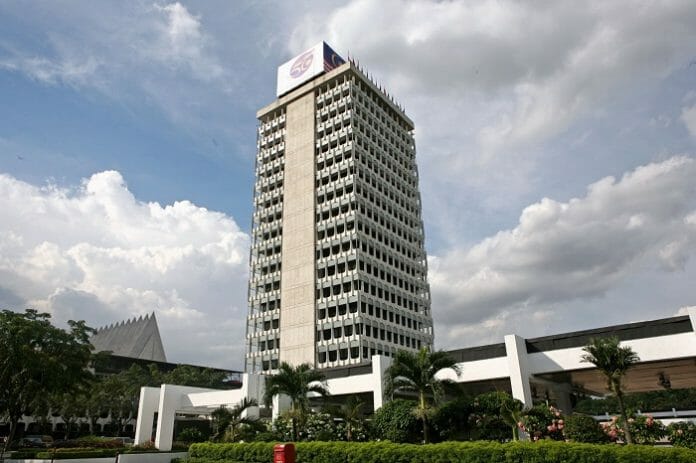There should be three areas of strategic focus for Budget 2023 – as short-term policy priorities in laying the foundation for medium-term objectives – which are in line with the “Malaysia Madani” concept – namely:
1) securing and guaranteeing our food security into the future;
2) expansion of the tax base to diversify sources of revenue and promote a more equitable wealth redistribution eco-system; and
3) coordination between fiscal policy and monetary policy to strengthen economic fundamentals and resilience in facing domestic and external
challenges.
The immediate context
The federal government needs to take pro-active measures to ensure continuity in efforts to deal with inflationary pressures that have not yet subsided.
As the leading stakeholder in fiscal policy, i.e., endowed with unparalleled spending power, the government needs to design and formulate a detailed and comprehensive plan to combat and “stabilise” the rate of inflation.
At the same time, monitoring and enforcement capabilities need to be strengthened.
The points for each of the three strategic focuses are as follows:
Food security
The government needs to set and provide allocations to encourage and incentivise and promote food security in urban areas, e.g., the Klang Valley/Greater Kuala Lumpur.
The allocation approach can be based on two main core areas, namely agriculture as industry/sector as well as urban/community farming.
Firstly, the allocation for agriculture as industry/sector needs to be geared towards automation and digitalisation (Industrial Revolution 4.0/4IR) which is also in line with Strategy 4 (i.e., “Food Security”) and 5 (i.e., “Digital Transformation”) of Anwar Ibrahim (AI)’s Innovation Agenda (IA) introduced and pioneered by EMIR Research.
Digitalisation of agriculture or precision farming as a whole takes two forms – agricultural methods and processes (i.e., from human labour to planting, watering and harvesting methods that involve automation, such as fertigation, drones and robots) and the supply chain.
Digitalisation is also useful to help farmers to analyse padi fields, farms and orchards before replanting. This will increase productivity and crop production/output as well as ensure cost savings for farmers that can be passed on to consumers.
Concomitant with that is the increase in farmers' income. For example, chilli farmers in the Kuala Langat PPK (local Farmers’ Association) have achieved a 33% increase in yield and a 22% increase in income.
Digitalisation of the supply chain will also benefit all stakeholders because the process from the farm (upstream) through wholesale and distribution channels (midstream) and finally retail (downstream) and food (consumer) because the technology deployed and practiced ensures transparency, enhanced accessibility and a more efficient mechanism for the exchange and disseminating of information regarding supply, price, quality and safety.
As such, digitalisation also plays a role in enabling track and trace so that the process of information retrieval becomes faster and in real-time. This is in line with Strategy 3 – “Curbing Cost”, AI’s IA of EMIR Research.
Secondly, vertical farming – as an integral aspect/dimension of the wider urban farming – needs to be promoted on a large scale in urban areas, especially in the West Coast conurbations (such as Penang, Kelang Valley and Iskandar Malaysia).
These efforts will also attract foreign investment (in line with Strategy 6 – “Foreign Investment”, AI’s IA) and promote the deployment of sunrise and emerging technologies (in line with Strategy 6 – “Sunrise Technologies”, AI’s IA).
Urban/community farming initiatives have already been introduced under the mentorship and sponsorship of the Department of Agriculture (DOA). This effort needs to be pushed forward more vigorously to ensure the stability of the supply and price of vegetables in the conurbations and to reduce dependence on the middlemen (in the supply chain).
Ideally, the government should also, in addition, ensure the existence of local community farm in each parliamentary constituency – to encourage a higher level of local self-sufficiency in vegetables.
Expansion of the tax base
A structural challenge that needs to be given special attention in the 2023 Budget is expanding the tax base – to reduce dependence on dividends and contributions from Petronas income in the operating expenditure (OE), for example.
We need to emulate Singapore's example where on February 14, the Minister of Finance through the 2023 Budget introduced excess taxes on high income earners, e.g., in real estate tax, luxury car tax, stamp duty, etc.
In Malaysia, the government needs to introduce a capital gains tax (CGT) in the ownership of shares. Wealth tax also needs to be implemented as one of the income redistribution measures in an effort to achieve a more equitable and progressive society (in line with Strategy 1 – “Unity and Tolerance” AI’s IA).
A tax on luxury goods can also be introduced for consumer goods valued at a certain level.
A temporary windfall tax also needs to be implemented on the banking sector which has enjoyed a large profit due to successive increases in the Overnight Interest Rate (OPR) by the Bank Negara.
Coordination between fiscal policy and monetary policy
The third structural issue is the lack of (precision) coordination or alignment between fiscal policy and monetary policy.
This is very critical – because fiscal policy always been implemented without specific reference to monetary policy and vice versa, especially.
There’s a need for the relationship to be tightened and structuralised.
Should the government intend to reduce the weight of the fiscal deficit in the form of fiscal consolidation, then it needs to ensure that the financial burden of the private sector and households is not affected.
This requires coordination and alignment where monetary policy needs to support fiscal consolidation efforts by ensuring that the overnight policy rate (OPR) is at a low level – ideally staying at 1.75% (or 1.5% maximum) for the long term or even in the context of the Medium-Term Fiscal Framework (MTFF) 2023-2025.
So, the dynamic balance between fiscal policy and monetary policy should centre on the government’s fiscal burden and the saving desires of the private sector and households.
Otherwise, what would happen is that the government will continue to pay higher debt service charges (DSC), thereby derailing its fiscal consolidation efforts.
Without coordination, fiscal consolidation efforts won’t be stable – even as it fluctuates according to the exigencies of the current economic situation. That is, the deficit will go up in downturns – and with the government still having to bear the pre-existing debt interest for previous issuance of bonds.
The MTFF’s policy projection/goal for the fiscal deficit to consolidate at (a gradual pace) towards averaging at 4.4% of GDP is unrealistic given the continuing geo- economic and geo-political uncertainties, not to mention the scarring effect of Covid-19.
The fiscal deficit goal should always refer to the real (and not nominal) economic context, e.g., levels of household debt to GDP ratio, unemployment and under- employment levels, the levels of the OPR, business sentiment (surveys, data, indices), etc.
Thus, in conclusion, monetary policy should be accommodative of fiscal policy and fiscal consolidation should always take into account the conditions of the real economy.
If not, it can result in the case of reducing the deficit “too fast, too soon.”
The still fragile and uncertain economic outlook is set against the backdrop of consecutive OPR increases which:
- burdens the government in terms of higher interest payments;
- burdens the private sector that’s still experiencing cash flow problems compounded by higher interest payments; and
- burdens households who are facing weakened purchasing power and saddled with higher interest payments.
It’s advisable that the fiscal deficit be increased to 7% or 8%. Therefore, the government should rethink its intention to reduce the deficit to 5% under the re- presented Budget 2023.
Oil prices for this year is expected to remain below USD100 per barrel – perhaps hovering between USD75 to USD85. The market has generally factored in or expected the future price of oil (priced in) where the futures contract has dropped in value – albeit at a moderate level – which EMIR Research had highlighted last year already (“The domino effect of the OPR hike”, May 27, 2022).
The contribution from Petronas is expected to be lower this year. Therefore, it’s critical to plug the fiscal gap) by expanding tax base as alluded to. In addition, a special GST tax targeted at certain sectors only (such as gambling, luxury cars), etc. could be implemented (without causing inflationary pressure).
At the same time, Budget 2023 should also provide for a tax cut between 2%-5% targeted at the middle-income group (M40) as well as the B40 who are eligible to pay tax. This to also counterbalance the effect of the consecutive OPR hikes.
In addition, SMEs (small and medium enterprises) also need more tax breaks where the tax rate on the first RM1,000,000 of taxable income is reduced from 17 percent to 15 percent (and not RM100,000 as announced in original Budget 2023).
Budget 2023 should also provide tax incentives for joint-ventures between our local SMEs (small and medium-sized enterprises) with the MNCs (multinational companies) – to promote the localisation of the export sector’s supply-chain.
What we should be doing is for Mida (Malaysia Investment Development Authority) to liberalise the industry and de-regulate – aiming for a so-called “big-bang” of de- regulation for the manufacturing industry only (not the financial services sector as in the case of the UK with its now touted Edinburgh reforms).
This is where license legislation and bureaucratic requirements are completely eliminated or diluted or reduced.
In order to facilitate the transfer of technology, the Industrial Coordination Act (1975) needs to be amended to allow international companies to co-own SMEs for a maximum period of 10 years – so that the supply chain will become more resilient and reduce dependence on the import of raw materials and semi-processes (especially semi-processed and capital goods).
The gap or distance between our exports and imports is narrowing. Last year, for the first time, our imports reached RM1 trillion – which is RM600 billion less than exports in the same year. This gap is expected to be further reduced in the coming years.
So, the supply chain for MNCs needs to be localised to reduce dependence and enhance resilience.
Furthermore, repatriation of earnings by MNCs (that has been made worse by the pandemic) will continue to dilute the value of our trade surplus (“The necessity of a low interest rate environment – or why inflation-targeting is unhelpful”, EMIR Research, March 16, 2022).
Finally, in closing, in order to ensure that domestic demand can be protected from a looming (technical) recession, if at all, it’s necessary that the Bank Negara takes steps now to reduce the OPR successively at the next Monetary Policy Committee (MPC) meeting – to promote a soft landing on the back of interest rate stability.
Once the recession is over, the government should be able to return the tax cuts to previous levels (e.g., for SMEs) and take steps to gradually reduce the fiscal deficit and the overall debt burden.
Domestic demand must always be supported and accommodated by the government’s fiscal policy (public sector) from time to time taking into account the state and dynamics of the private sector and households (domestic) as well as the export sector (external).
Jason Loh Seong Wei is head of Social, Law &Human Rights at EMIR Research, an independent think tank focussed on strategic policy recommendations based on rigorous research.









